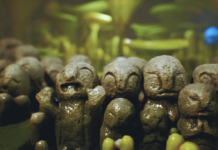Every Half-Life news is good news! Today we have a shiny, ray-traced Red Letter Day, with the announcement of Half-Life 2 RTX we all eagerly needed and waited for.
In a stunning announcement for Valve gaming enthusiasts worldwide, NVIDIA has unveiled its latest masterpiece: Half-Life 2 RTX. This eagerly anticipated remaster builds upon the legendary 2004 first-person shooter Half-Life 2, promising to revolutionize its visuals and overall experience. This announcement comes after quite a few new Half-Life “leaks” or hints (Half-Life Gamescome leak and Valve uploading a HL2 song on Spotify) we’ve received in the past month or so. It’s great that we finally receive some Half-Life content, even if it’s a remastered version of the legendary Half-Life 2.
Originating from the NVIDIA RTX Remix platform – a free modding platform built on the robust NVIDIA Omniverse – this endeavor pushes the boundaries of modding. RTX Remix empowers modders to craft and distribute #RTXON mods for classic games, loaded with advanced features such as enhanced materials, comprehensive ray tracing, NVIDIA DLSS, NVIDIA RTX IO, and NVIDIA Reflex.
To showcase the platform’s capabilities, NVIDIA had previously released a modern reimagining of Valve’s eternal classic, Portal with RTX. This re-envisioned Portal experience then led community modders to produce the high-quality Portal: Prelude remaster using these state-of-the-art tools.
Now, NVIDIA’s latest announcement reveals a remaster of Valve’s Half-Life 2, often celebrated as one of the finest games ever developed. Four premier mod teams renowned for their work on Half-Life 2 have united under the “Orbifold Studios” banner to bring this project to life. By leveraging the updated RTX Remix tools, the teams are redesigning materials with Physically Based Rendering (PBR) properties, infusing extra geometric details using Valve’s Hammer editor, and implementing cutting-edge NVIDIA technologies. Eager fans can sneak a peek at what’s in store through the official announcement trailer.
Remarkably, almost every game asset undergoes high-fidelity reconstruction. The ray tracing technology employed, commonly referred to as path tracing, will enable groundbreaking visuals in Half-Life 2 RTX. For instance, the world textures now boast 8X the pixels, and assets such as the in-game suit manifest a whopping 20X the geometric detail found in the original. Minute details, such as fabric weavings around suit joints and intricate interactions of plastics and metals in its composition, are now discernible.
Additionally, lighting in the game is being elevated to new dimensions. Light sources now scatter throughout the scene, casting hyper-realistic shadows. One iconic example is in Kleiner’s Lab, where orange vats radiate light, casting vibrantly illuminated corners, with the in-vat liquid refracting the game world within it. Another transformation lies in the props: the magnifying lens on Kleiner’s desk, which in 2004 used shaders to display a low-res world reflection, now showcases a curved lens that accurately refracts light, intensifying in-game immersion.
Coupled with overhauled PBR materials and textures, even creatures like the Headcrab “Lamarr” achieve an unprecedented level of detail, making this two-decade-old masterpiece stand toe-to-toe with modern games.
Given its ambitious scope, “Half-Life 2 RTX: An RTX Remix Project” is still in its infancy (more on Nvidia’s blog post here). NVIDIA emphasizes the community-driven nature of this remaster and calls upon skilled modders and 3D artists to join the endeavor. Those interested and experienced in mod creation or 3D artistry are encouraged to apply via the official website.
For those as excited as we are about this modern revival, keep your eyes on GeForce.com for further updates on “Half-Life 2 RTX.” The future of classic gaming looks brighter than ever.



